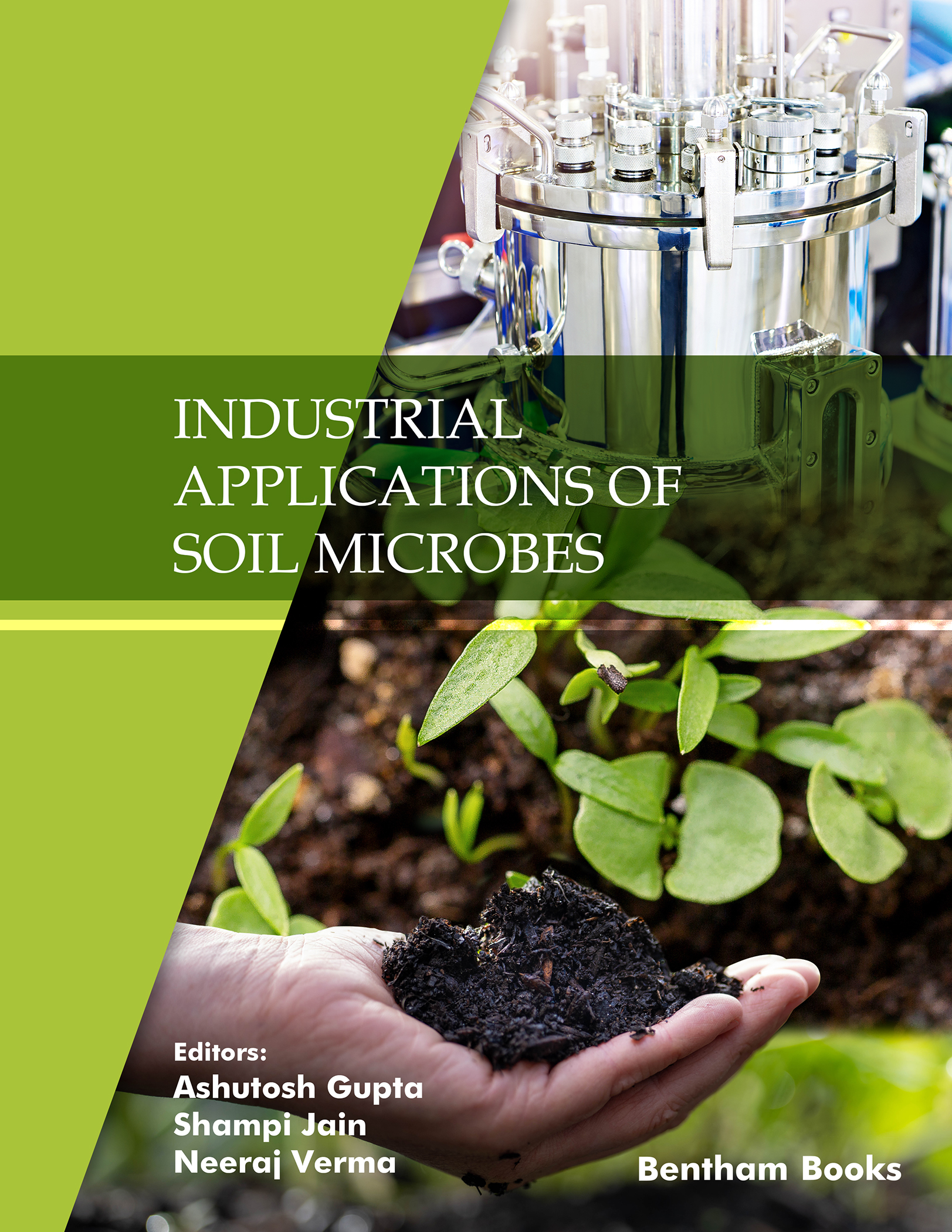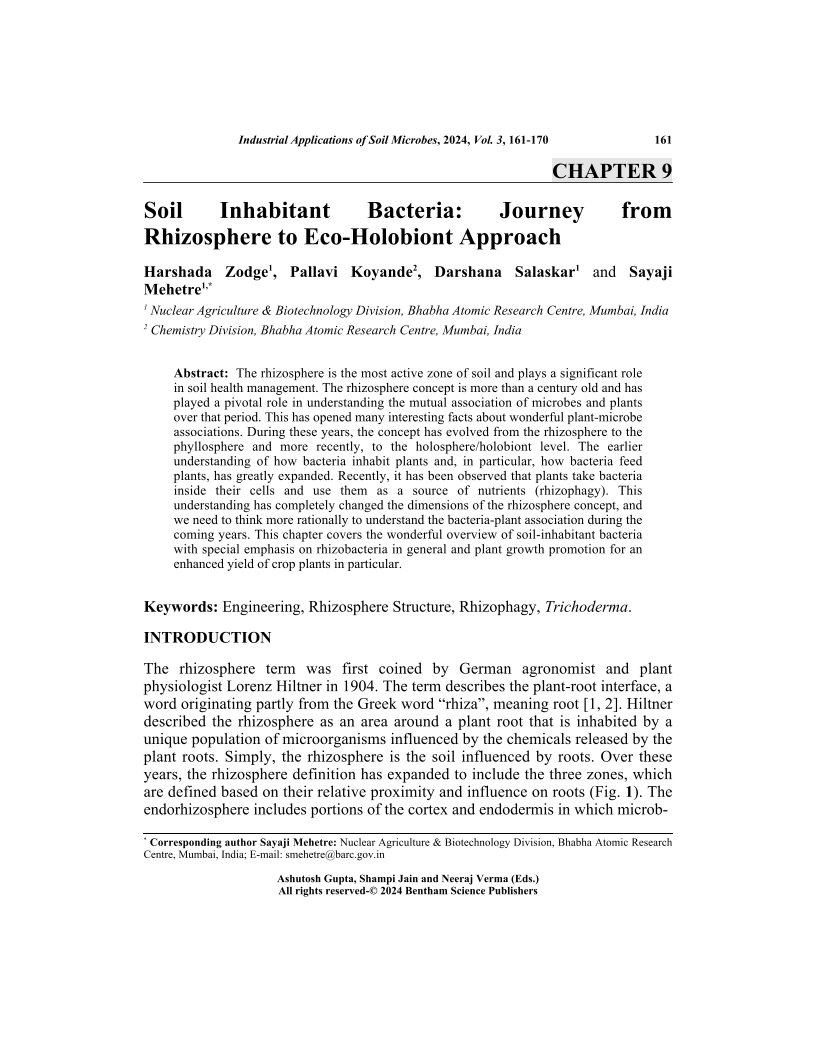Soil Inhabitant Bacteria: Journey from Rhizosphere to Eco-Holobiont Approach

- Authors: Harshada Zodge1, Pallavi Koyande2, Darshana Salaskar3, Sayaji Mehetre4
-
View Affiliations Hide AffiliationsAffiliations: 1 Nuclear Agriculture & Biotechnology Division, Bhabha Atomic Research Centre, Mumbai, India 2 Chemistry Division, Bhabha Atomic Research Centre, Mumbai, India 3 Nuclear Agriculture & Biotechnology Division, Bhabha Atomic Research Centre, Mumbai, India 4 Nuclear Agriculture & Biotechnology Division, Bhabha Atomic Research Centre, Mumbai, India
- Source: Industrial Applications of Soil Microbes , pp 161-170
- Publication Date: April 2024
- Language: English
Soil Inhabitant Bacteria: Journey from Rhizosphere to Eco-Holobiont Approach, Page 1 of 1
< Previous page | Next page > /docserver/preview/fulltext/9789815079753/chapter-9-1.gif
The rhizosphere is the most active zone of soil and plays a significant role in soil health management. The rhizosphere concept is more than a century old and has played a pivotal role in understanding the mutual association of microbes and plants over that period. This has opened many interesting facts about wonderful plant-microbe associations. During these years, the concept has evolved from the rhizosphere to the phyllosphere and more recently, to the holosphere/holobiont level. The earlier understanding of how bacteria inhabit plants and, in particular, how bacteria feed plants, has greatly expanded. Recently, it has been observed that plants take bacteria inside their cells and use them as a source of nutrients (rhizophagy). This understanding has completely changed the dimensions of the rhizosphere concept, and we need to think more rationally to understand the bacteria-plant association during the coming years. This chapter covers the wonderful overview of soil-inhabitant bacteria with special emphasis on rhizobacteria in general and plant growth promotion for an enhanced yield of crop plants in particular.
-
From This Site
/content/books/9789815079753.chapter-9dcterms_subject,pub_keyword-contentType:Journal105

